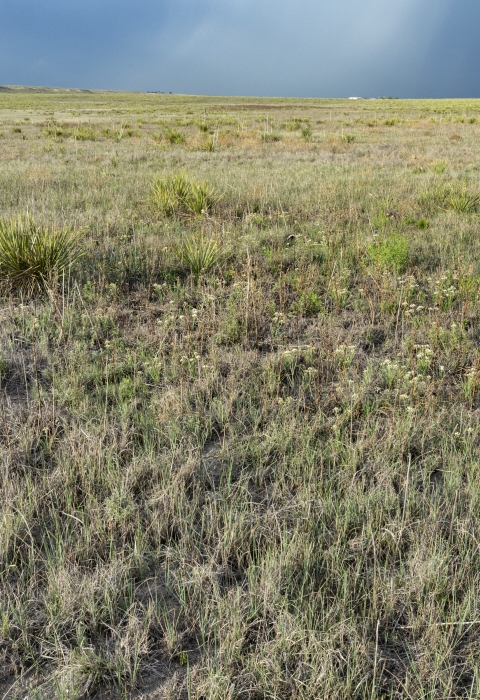AUSTIN – The U.S. Fish and Wildlife Service (Service) is listing the bracted twistflower, a rare annual wildflower native to the southeastern edge of the Edwards Plateau in Central Texas, as threatened under the Endangered Species Act.
Additionally, the Service is announcing a special 4(d) rule that tailors protections for the plant and critical habitat that designates 1,596 acres in four Texas counties.
“We are listing bracted twistflower as a threatened species because many of its populations have been lost to development, browsing by white-tailed deer and introduced ungulates, juniper encroachment, and other causes,” said Chris Best, state botanist for the Service in Texas. “Nevertheless, the cities of Austin and San Antonio are actively monitoring populations on protected lands and have demonstrated successful management actions.This is a species that could be recovered within a few decades if its remaining habitats are managed appropriately.”
Bracted twistflower is an annual plant that blooms in spring and bears showy, lavender-purple flowers that provide nectar and pollen for native bee species. The rare wildflower can be found in vegetation communities consisting of Ashe juniper, plateau live oak, Texas mountain laurel, Texas red oak, and other trees and shrubs along the rocky slopes of the Balcones Escarpment from Austin, in the northeast, to Garner State Park, in the west.
The ESA defines a threatened species as “any species which is likely to become an endangered species within the foreseeable future throughout all or a significant portion of its range.” The main threats to the bracted twistflower include habitat destruction from urban and residential land development, browsing by white-tailed deer and introduced ungulates, reduced light levels from an increased density of woody plant cover, small population sizes, and lack of genetic diversity.
Critical habitat identifies geographic areas containing features essential for the conservation of a threatened or endangered species, and which may require special management considerations or protection. The nine occupied areas designated for bracted twistflower are already managed for conservation of the species, including approximately 345 acres on state land at Garner State Park; approximately 714 acres on lands managed by the City of Austin Parks and Recreation Department and City of Austin Water Utility; approximately 513 acres on lands managed by the City of San Antonio Parks and Recreation Department, and approximately 23 acres on private land that is voluntarily managed for conservation.
Bracted twistflower persists in habitats as seeds that may remain dormant in the soil for years.Large pulses of germination occur about once every five to ten years.Consequently, the plant may occupy a site but remain undetectable until favorable weather coaxes the seeds to germinate.Federal agencies that undertake, fund, or permit activities that may affect the species’ critical habitat are required to consult with the Service to ensure such actions do not adversely modify or destroy designated critical habitat.
The proposed section 4(d) rule would provide for the conservation of bracted twistflower by prohibiting removing, cutting, digging up, or damaging or destroying the species on non-federal lands in knowing violation of any state law or regulation, or in the course of violating state criminal trespass law.
The bracted twistflower listing and critical habitat are based on the best available science, including a recently completed species status assessment that included input and review from academia and state agencies.
The Service is committed to working with local communities, state and federal agencies, Tribes, conservation groups and private sector partners to ensure they have the tools they need to protect and recover America’s imperiled species. This includes the Bracted Twistflower Working Group, an informal alliance of individuals, non-profit organizations, and municipal, state, and federal agencies that have promoted the species’ conservation since the early 2000s.
Additionally, a memorandum of agreement between the Service and the parties of the Balcones Canyonlands Habitat Conservation Plan (BCCP) was established in 2004 to promote bracted twistflower conservation on the Balcones Canyonlands Preserve (BCP). The City of Austin Wildlands Conservation Division and the City of San Antonio Parks and Recreation Department conduct annual population censuses on their lands and have contributed to the conservation and knowledge of the species.
The final listing goes into effect 30 days following the date of publication in the Federal Register.



